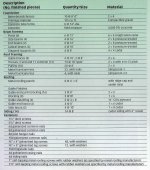Do you have plans for the carport, or are you making it up as you go along?
If you have plans, either purchased as a package, or individually drawn, read them carefully. If you read every word on every page, and look at the definition of the symbols that are used to describe various walls, you will usually find that professionally drawn plans specify the type of fasteners to be used.
When I built a house several years ago, I was rather forcefully educated in this area.
I used to think ring-shank nails were good. My architect told me that for fastening any type of sheet material (plywood, OSB, T-111 siding, etc.) to framing or any dimensional lumber they are rarely approved. Sure, they resist pull out, but they leave a hole in the sheeting that is larger than the nail shank, and over time the forces on the sheeting "work" this hole and enlarge it, which is the failure mechanism seen. But, they sure are popular because they are hard to pull out. He specified "screw nails" which have spiral flutes on them, sort of like polygonal rifling in a gun, which have much better test results. Couldn't find them at any of the big box stores, but a professional construction supply house had them and knew exactly why they were preferred.
Another place to be very careful is the size of nails. For example, many people think all 16d nails are about equal. This is just plain wrong. A 16d common nail is 3-1/2" long and 0.162" in diameter. A 16d sinker is only 3-1/4" long and 0.148" in diameter. A 16d short is 3-1/4" long, but only 0.131 in diameter. The big box stores sell the 16d shorts for nail guns, where they are sometimes called 16d cooler nails. The 16d short nails have less than 70% of the shear strength of the 16 d common nails, but are by far the most popular for nail guns. It is very difficult to find 16d common nails collated for a nail gun, and most nail guns do not like to shoot them.
As stated above, the Simpson catalog is a wealth of information. But, you have to read it. All the fine print. If you put a 16d short into a connector when the catalog calls for a 16d common, Simpson is not going to stand behind it when that fails. You also have to read the part where it says you need to drill pilot holes so you don't split the lumber. I don't think I have ever seen a carpenter do that, and I have had guys walk off my jobs when I told them they had to drill pilot holes. I even show them the catalog where it says they are required, and they just say they have never done it and aren't going to do it now. Then I tell them about my policy which is that they either follow instructions or don't get paid.
Screws are convenient and fast, but frequently do not have a lot of shear strength. Look up the specs and see for yourself. The way to overcome this is to use more of them, but few contractors like this approach since they are expensive and more screws=more time.
The big box stores are very convenient, but you need to read the plans very carefully and be certain you buy the right materials, or get the right materials from a better supply house. And, the clerk in the aisle is not an engineer, and doesn't really know what he is talking about. If he was he would have a much better job.

